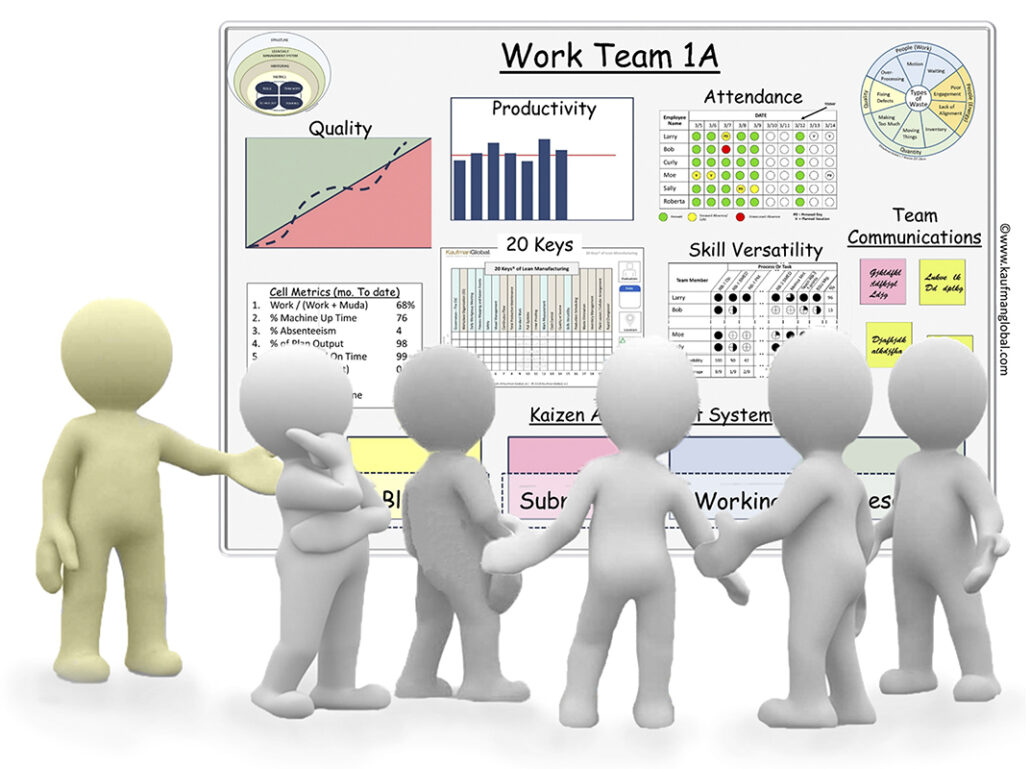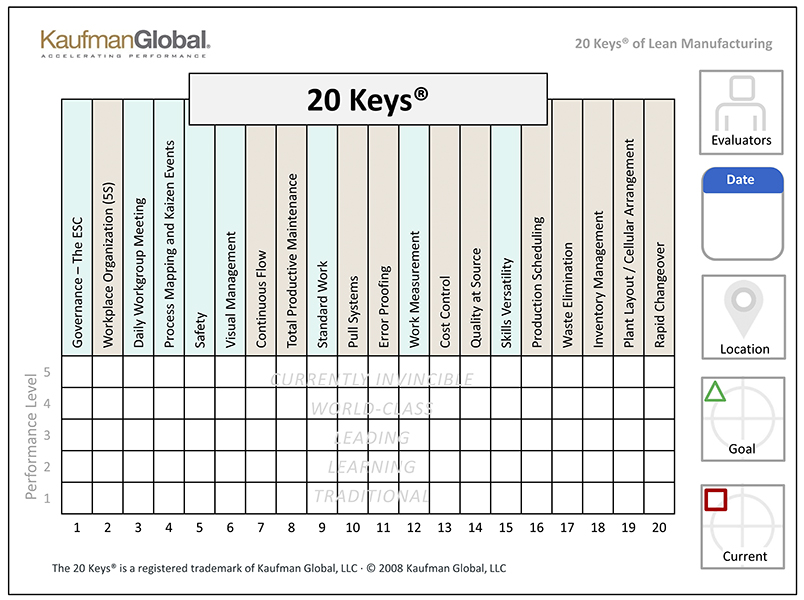Lean Daily Management System
The Lean Daily Management System® (LDMS®) is a set of standard techniques that help intact workgroups to focus on and continuously improve their day-to-day work processes (Kaizen). LDMS engages natural work teams and encourages communication, participation and ownership. We created and hold the trademark on the Lean Daily Management System – contact us for more information.

Shift Start-Up meeting at a Primary Visual Display board
Five core elements of the Lean Daily Management System
- A daily Shift Start-Up meeting (SSU)
- Work group Primary Visual Display (PVD)
- Kaizen Action Sheet (KAS) System
- The 20 Keys® assessment and improvement plan
- Short Interval Coaching (SIC) by supervisors
1) Shift Start-Up meeting is a brief gathering takes place at the primary visual display board. It occurs daily and should be no more than 10 minutes in duration. It is a quick status of the day’s events and priorities. The SSU promotes team communication and alignment and is sometimes referred to as a daily huddle.
2) Primary Visual Display board is a visual representation of the team’s performance, priorities and improvements. This is the focal point for workgroup activities and performance metrics. The idea of the PVD is to show process status in a way that anyone, at a glance, can understand what is going on. The PVD contains metrics such as safety, quality and efficiency, along with other measures directly related to the team’s work. Other elements include Kaizen Action Sheets, 20 Keys, Skill Versatility and team communications.

Kaizen Action Sheets are part of the Primary Visual Display board
3) Kaizen Action Sheets are a simple but effective way to collect and act upon improvement ideas from the team. The four categories of Kaizen Action Sheets are: Blank, Submitted, Working and Resolved. Each team member is expected to submit their ideas about what can be done to make small continuous improvement in their work processes. These are mentioned during the shift start up meeting and acted upon by members of the team as part of their designated process improvement activities.

20 Keys scoring table
4) The 20 Keys is a process performance and continuous improvement planning tool that combines intuitive world-class benchmarks with a means of measuring and scoring group performance. The 20 Keys focuses intact work groups on the most important things that will improve their process performance. It compares current performance with world-class standards. The 20 Keys is a template that guides ongoing improvement activities.
5) Short Interval Coaching is the process whereby supervisors and managers shift part of their focus and engage their team in a conversation

Short Interval Coaching – talking about how to eliminate waste!
about performance and priorities instead of purely giving orders bossing people around. We say “short interval” to express the idea that this happens many times a day. With short interval coaching, team members are asked about their work and what can be done to make it better. This form of leadership acquires better information because it engages the people who know the most about the work they are actually doing.
Best Practice – Weekly Continuous Improvement (CI) Meeting – We encourage a standing meeting that provides a specific time where team members can focus on their improvement ideas and initiatives.
We’ve implemented the Lean Daily Management System in all types of industries, services and business types around the world. It’s second to none for workgroup engagement and performance improvement. Want to know more? Download our LDMS e-Book.
